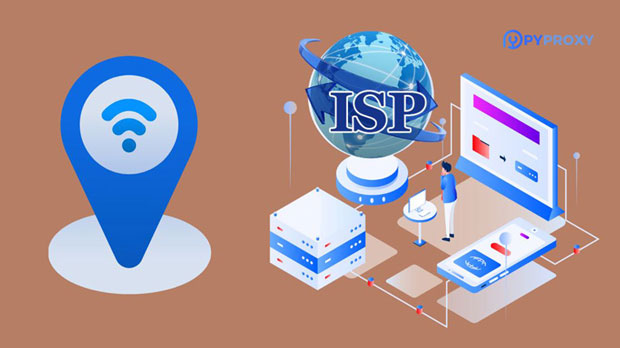When it comes to online anonymity, security, and bypassing geographic restrictions, residential proxies have become a vital tool. These proxies not only help mask your IP address but also allow you to browse the internet safely, securely, and without detection. However, with the increasing demand for residential proxies, it’s essential to understand how to make a secure purchase without falling prey to unreliable or malicious providers. This guide will walk you through the steps to safely purchase high-quality residential proxies, ensuring that you protect your privacy and enjoy a smooth browsing experience. Understanding Residential ProxiesBefore jumping into the process of buying high-quality residential proxies, it’s crucial to understand what they are and how they work. Residential proxies are IP addresses assigned by internet service providers (ISPs) to real residential devices, such as personal computers and smartphones. These proxies differ from data center proxies, which are virtual IP addresses hosted in large server farms. Residential proxies are often seen as more reliable because they are tied to real devices, making them harder to detect by websites and other online services. They provide greater anonymity, better bypassing capabilities for geo-restricted content, and more effective fraud prevention. As a result, they are widely used for tasks like web scraping, sneaker shopping, account creation, and more.Why High-Quality Residential Proxies MatterNot all residential proxies are created equal. Low-quality proxies may cause slow connection speeds, frequent disconnections, or even IP bans. High-quality proxies, on the other hand, offer reliable speeds, stability, and access to diverse locations worldwide. Therefore, when purchasing residential proxies, it’s essential to focus on the quality of the provider and the proxies themselves.High-quality residential proxies offer the following advantages:- Reliability: They have a high uptime and minimal interruptions, ensuring that tasks like web scraping or account management proceed without delays.- Geo-targeting: Premium proxies come with a wide range of locations, giving you access to IP addresses from specific countries or regions for better targeting.- Security: A reputable provider ensures that their proxies are not involved in fraudulent activities, minimizing the risk of being flagged or blocked.How to Safely Buy High-Quality Residential ProxiesPurchasing residential proxies is not a decision to take lightly. There are several factors to consider when looking for a trustworthy provider. Below are the key steps to ensure that you buy high-quality residential proxies safely.1. Research the Provider’s ReputationReputation is one of the most critical aspects when choosing a proxy provider. A trustworthy provider should have positive reviews, testimonials, and a proven track record of delivering high-quality proxies. Start by checking customer feedback on forums, social media platforms, and independent review websites. Avoid providers with suspiciously low prices or those with little to no customer feedback.Additionally, ensure that the provider offers clear terms of service and privacy policies. They should respect user privacy and not engage in any data-sharing practices that could compromise your security.2. Check for a Large Pool of Residential IPsOne of the defining features of residential proxies is the size and diversity of the IP pool. A high-quality provider will offer access to a vast number of IP addresses from different locations worldwide. This is important for tasks such as web scraping or bypassing geo-restrictions.Make sure the provider offers a sufficient number of IPs in multiple regions, including major countries like the US, UK, Canada, and others. A diverse pool also reduces the chances of hitting IP blocks or captchas, which can significantly disrupt your online activities.3. Evaluate Connection Speed and StabilityConnection speed and stability are essential factors when purchasing residential proxies. Slow or unreliable proxies can ruin your browsing experience and hinder the success of your tasks. A good provider will offer proxies with consistent speeds and minimal downtime. Before committing to a provider, consider asking for a trial period to test the proxies. Many reputable services offer short-term trials or money-back guarantees, allowing you to test the proxies’ performance in real-time.4. Ensure Compatibility with Your NeedsDifferent tasks require different types of proxies. For example, web scraping may need fast, rotating proxies, while accessing geo-restricted content might require proxies located in specific countries. Ensure that the residential proxy provider you choose offers the type of proxy that aligns with your needs. Some providers offer specialized proxies for tasks like social media automation, sneaker shopping, or market research, so look for options tailored to your specific requirements.5. Consider Customer Support and Technical AssistanceEven high-quality residential proxies may experience occasional issues. Whether you’re facing connectivity issues, need help with setup, or have questions about your plan, customer support plays a crucial role in ensuring a smooth experience. Choose a provider that offers responsive customer support through multiple channels like live chat, email, or phone. Quick resolution to technical problems can make all the difference in the success of your online projects.6. Be Wary of Low-Quality, Cheap ProxiesWhile it may be tempting to go for cheaper options, low-cost residential proxies often come with significant drawbacks. These may include low speeds, frequent disconnects, or even the use of proxies that are involved in illegal activities. High-quality residential proxies come at a premium price, and while they might seem more expensive, they offer long-term value. They guarantee better performance, privacy, and security, ensuring that your online activities remain safe and undetected.7. Protect Your Privacy and DataYour online privacy and data protection should be top priorities when purchasing residential proxies. Ensure that the provider uses strong encryption methods to secure your data and communication. They should also have strict privacy policies that prevent the misuse or sale of your personal information.Additionally, avoid providers that don’t clearly outline their logging policies. Opt for services that have a no-logs policy, ensuring that your activities aren’t recorded or stored by the provider.Purchasing high-quality residential proxies requires careful consideration and research. By choosing a reputable provider, ensuring a diverse pool of IPs, checking speed and stability, and verifying compatibility with your specific needs, you can ensure a safe and effective purchase. While high-quality proxies may come at a higher price, the added security, reliability, and performance they offer are worth the investment. Stay vigilant, prioritize privacy and security, and make informed decisions when buying residential proxies to enhance your online experience.
Sep 02, 2025



































































